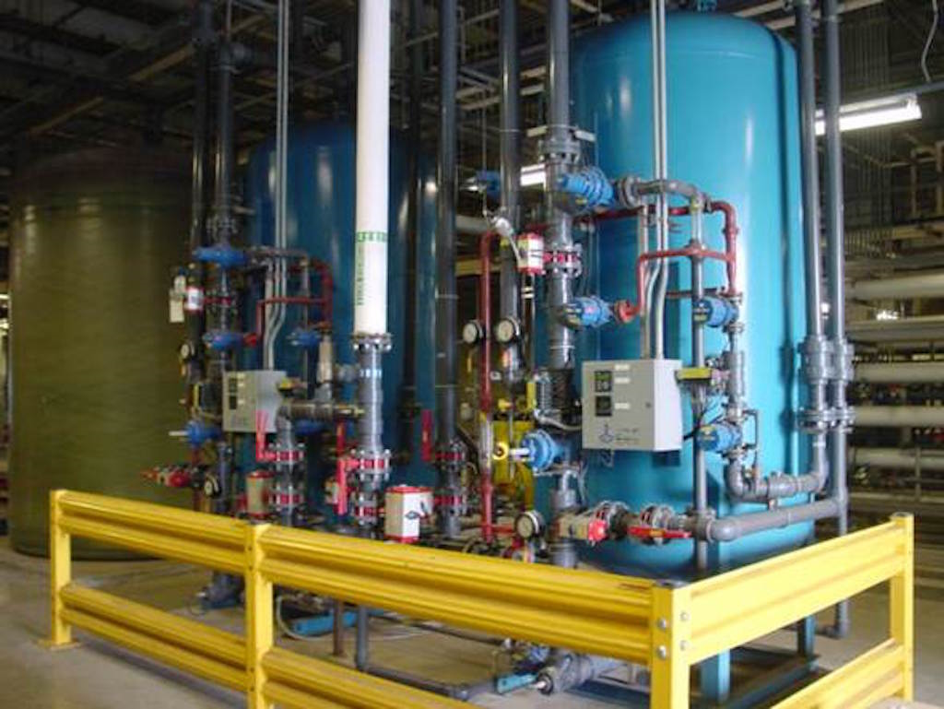Condensate Polishing Units (CPU)
Condensate polishing typically involves Ion Exchange technology for the removal of trace dissolved minerals and suspended matter. During the process of steam generation in power plants, the steam cools and condensate forms. The condensate is collected and then used as boiler feed water. Prior to re-use, the condensate must be purified or “polished”, to remove impurities (predominantly silica oxides and sodium) which have the potential to cause damage to the boilers, steam generators, reactors and turbines. Dissolved (i.e. silica oxides) and suspended matter (ex. iron oxide particulates from corrosion, also called ‘crud’), as well as other contaminants, which can cause corrosion and maintenance issues are effectively removed by condensate polishing treatment. The objective of Condensate Polishing is to remove all soluble impurities and protect the high pressure boilers. These contaminants can come from many sources:
- Cooling water from condenser in-leakage and this can be a particularly severe problem where sea water cooling is employed.
- Make-up water, this can arise from mal operation such that regeneration chemicals enter the system, plant over-run during the service cycle or complete removal of certain substances such as organic matter may not occur.
- The conditioning chemicals used to protect the circuit e.g. ammonia, morpholine and hydrazine can be regarded as sources of contamination if they are to be removed by the condensate purification plant.
- Insoluble impurities will usually be the corrosion products from the materials in the system with copper and iron are the predominant species.

Tentative Limiting Parameters
Factors Affecting Performance
Parameters |
Units |
Normal |
Starting |
|---|---|---|---|
| Suspended Solids | ppb | 10 | 100 |
| Na+ | ppb | 10 | 100 |
| SiO2 | ppb | <10 | <50 |
| Fe | ppb | <5 | <100 |
| Cu | ppb | <3 | <15 |
| Cl– | ppb | <1 | <10 |
| Cation Conductivity | µS/cm | <0.15 | <0.2 |
| Ph | – | 6.7 -7.5 | |
| TDS | ppb | <20 | <50 |
| Temperature | 0C | <50
60 (Max) |
|
| Maximum Pressure Drop | MPa | <0.35 |
Precautions to be taken
Incase of Deep Bed CPU, immediately after regeneration the bed may leak out some residual regenerant chemicals that contaminating feed water quality
Any disintegration of resin in CPU will directly cause contamination of feed water by disintegrated resin
Since CPU is installed in the main stream water circuit, it may result in operational disturbances such as excess Pressure Drop across CPU
Pressure & Temperature of Influent to CPU may not be always compatible with the design conditions. This may impair the resin characteristics
We have supplied Plants that can directly works at temperature of 80 Deg C, without reducing the temperature, thus saving lot of Thermal Energy